Passive Infrared (PIR)-Based Indoor Position Tracking for Smart Homes Using Accessibility Maps and A-Star Algorithm
Abstract
:1. Introduction
2. Methodology
2.1. Grid-Based Accessibility Map Building
2.2. Algorithm Design
2.3. PIR Sensor Model
3. Experiments and Results
3.1. PIR Sensor Parameters
3.2. Hardware Platform
3.3. Human Tracking
4. Conclusions
Acknowledgments
Author Contributions
Conflicts of Interest
References
- Wikipedia. Elderly Care. Available online: https://en.wikipedia.org/wiki/Elderly_care (accessed on 12 November 2017).
- Wickramasinghe, A.; Torres, R.L.S.; Ranasinghe, D.C. Recognition of falls using dense sensing in an ambient assisted living environment. Pervasive Mob. Comput. 2017, 34, 14–24. [Google Scholar] [CrossRef]
- Dardari, D.; Closas, P.; Djurić, P.M. Indoor Tracking: Theory, Methods, and Technologies. IEEE Trans. Veh. Technol. 2015, 64, 1263–1278. [Google Scholar] [CrossRef]
- Want, R.; Hopper, A.; Falcao, V.; Gibbons, J. The active badge location system. ACM Trans. Inf. Syst. (TOIS) 1992, 10, 91–102. [Google Scholar] [CrossRef]
- Priyantha, N.B.; Chakraborty, A.; Balakrishnan, H. The cricket location-support system. In Proceedings of the 6th Annual International Conference on Mobile Computing and Networking, Boston, MA, USA, 6–11 August 2000; pp. 32–43. [Google Scholar]
- Jiang, Z.; Xi, W.; Li, X.; Tang, S.; Zhao, J.; Han, J.; Zhao, K.; Wang, Z.; Xiao, B. Communicating is crowdsourcing: Wi-Fi indoor localization with CSI-based speed estimation. J. Comput. Sci. Technol. 2014, 29, 589–604. [Google Scholar] [CrossRef]
- Baldini, A.; Ciabattoni, L.; Felicetti, R.; Ferracuti, F.; Longhi, S.; Monteriù, A.; Freddi, A. Room occupancy detection: Combining RSS analysis and fuzzy logic. In Proceedings of the 6th IEEE International Conference on Consumer Electronics-Berlin (ICCE-Berlin), Berlin, Germany, 5–7 September 2016; pp. 69–72. [Google Scholar]
- Yu, C.-R.; Wu, C.-L.; Lu, C.-H.; Fu, L.-C. Human localization via multi-cameras and floor sensors in smart home. In Proceedings of the IEEE International Conference on Systems, Man and Cybernetics (SMC’06), Taipei, Taiwan, 8–11 October 2006; Volume 5, pp. 3822–3827. [Google Scholar]
- Bai, Y.; Lu, X. Research on UWB indoor positioning based on TDOA technique. In Proceedings of the 9th International Conference on Electronic Measurement and Instruments (ICEMI’09), Beijing, China, 16–19 August 2009; pp. 1167–1170. [Google Scholar]
- Gozick, B.; Subbu, K.P.; Dantu, R.; Maeshiro, T. Magnetic maps for indoor navigation. IEEE Trans. Instrum. Meas. 2011, 60, 3883–3891. [Google Scholar] [CrossRef]
- Yun, X.; Bachmann, E.R.; Moore, H.; Calusdian, J. Self-contained position tracking of human movement using small inertial/magnetic sensor modules. In Proceedings of the 2007 IEEE International Conference on Robotics and Automation, Roma, Italy, 10–14 April 2007. [Google Scholar]
- Luo, R.C.; Chen, O. Wireless and pyroelectric sensory fusion system for indoor human/robot localization and monitoring. IEEE/ASME Trans. Mechatron. 2013, 18, 845–853. [Google Scholar] [CrossRef]
- Yang, B.; Luo, J.; Liu, Q. A novel low-cost and small-size human tracking system with pyroelectric infrared sensor mesh network. Infrared Phys. Technol. 2014, 63, 147–156. [Google Scholar] [CrossRef]
- Al-Naimi, I.; Wong, C.B.; Moore, P.; Chen, X. Advanced approach for indoor identification and tracking using smart floor and pyroelectric infrared sensors. In Proceedings of the 5th International Conference on Information and Communication Systems (ICICS), Irbid, Jordan, 1–3 April 2014; pp. 1–6. [Google Scholar]
- Wang, H.; Zhou, J.; Zheng, G.; Liang, Y. HAS: Hierarchical A-Star algorithm for big map navigation in special areas. In Proceedings of the ICDH 2014 International Conference on Digital Home, Guangzhou, China, 28–30 November 2014. [Google Scholar]
- Song, B.; Choi, H.; Lee, H.S. Surveillance Tracking System Using Passive Infrared Motion Sensors in Wireless Sensor Network. In Proceedings of the International Conference on Information Networking, Busan, Korea, 23–25 January 2008; pp. 1–5. [Google Scholar]
- Xiaomu, L.; Tong, L.; Baihua, S.; Qinqun, C.; Liwen, G.; Xiaoyan, L. Human Indoor Localization Based on Ceiling Mounted PIR Sensor Nodes. In Proceedings of the 13th IEEE Annual Consumer Communications & Networking Conference(CCNC), Las Vegas, NV, USA, 9–12 January 2016; pp. 868–874. [Google Scholar]
- Yang, D.; Sheng, W.; Zeng, R. Indoor human localization using PIR sensors and accessibility map. In Proceedings of the 5th Annual IEEE International Conference on Cyber Technology in Automation, Control and Intelligent Systems (CYBER), Shenyang, China, 8–12 June 2015; pp. 577–581. [Google Scholar]
- The VN-100 IMU/AHRS. Available online: http://www.vectornav.com/products/vn100-rugged (accessed on 12 November 2017).
- Kim, H.H.; Ha, K.N.; Lee, S.; Lee, K.C. Resident location recognition algorithm using a Bayesian classifier in the PIR sensor-based indoor location-aware system. IEEE Trans. Syst. Man Cybern. Part C 2009, 39, 240–245. [Google Scholar]
- Shen, B.; Wang, G. Object localization with wireless binary pyroelectric infrared sensors. In Proceedings of the 2013 Chinese Intelligent Automation Conference, Yangzhou, China, 23–25 August 2013. [Google Scholar]
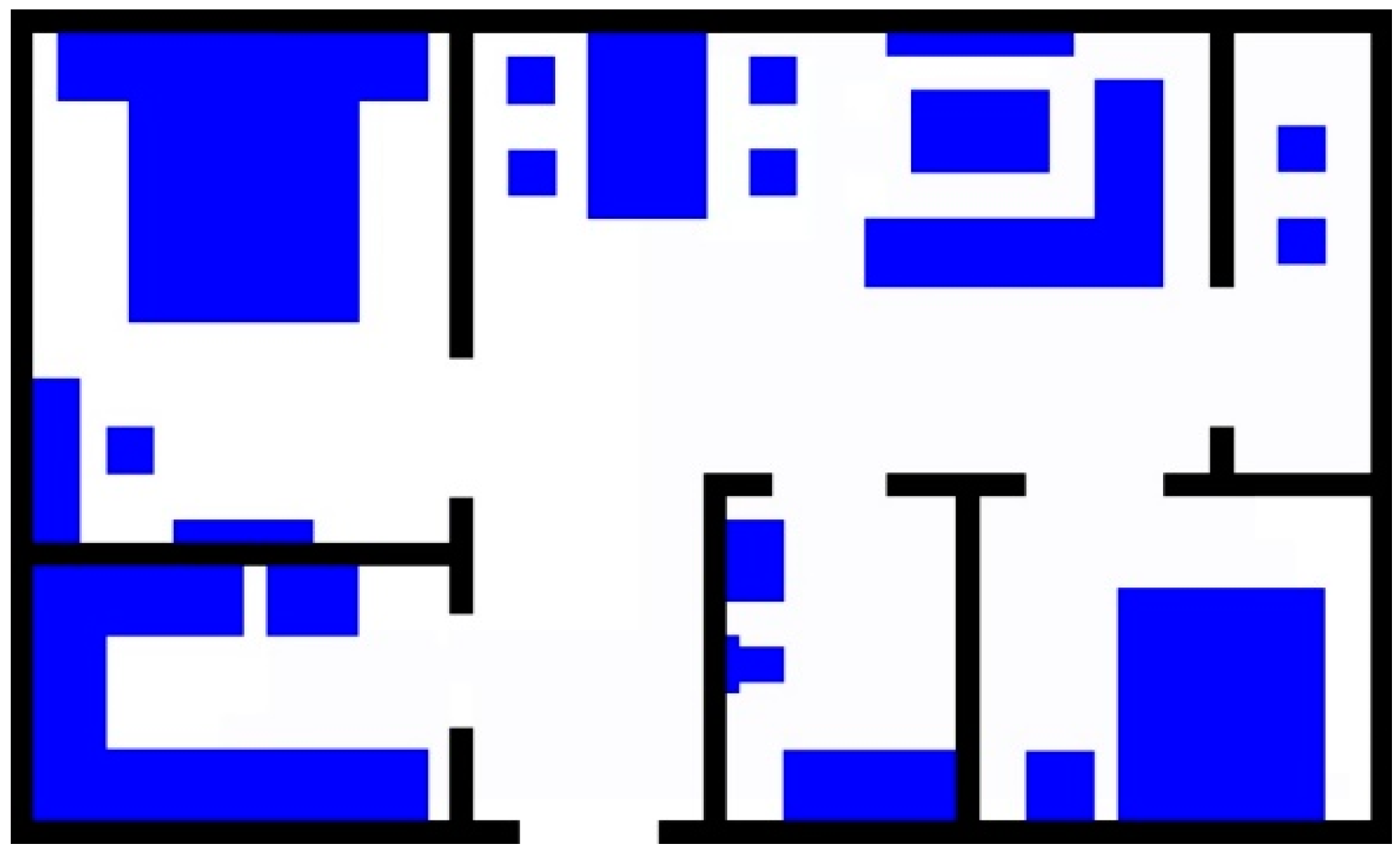

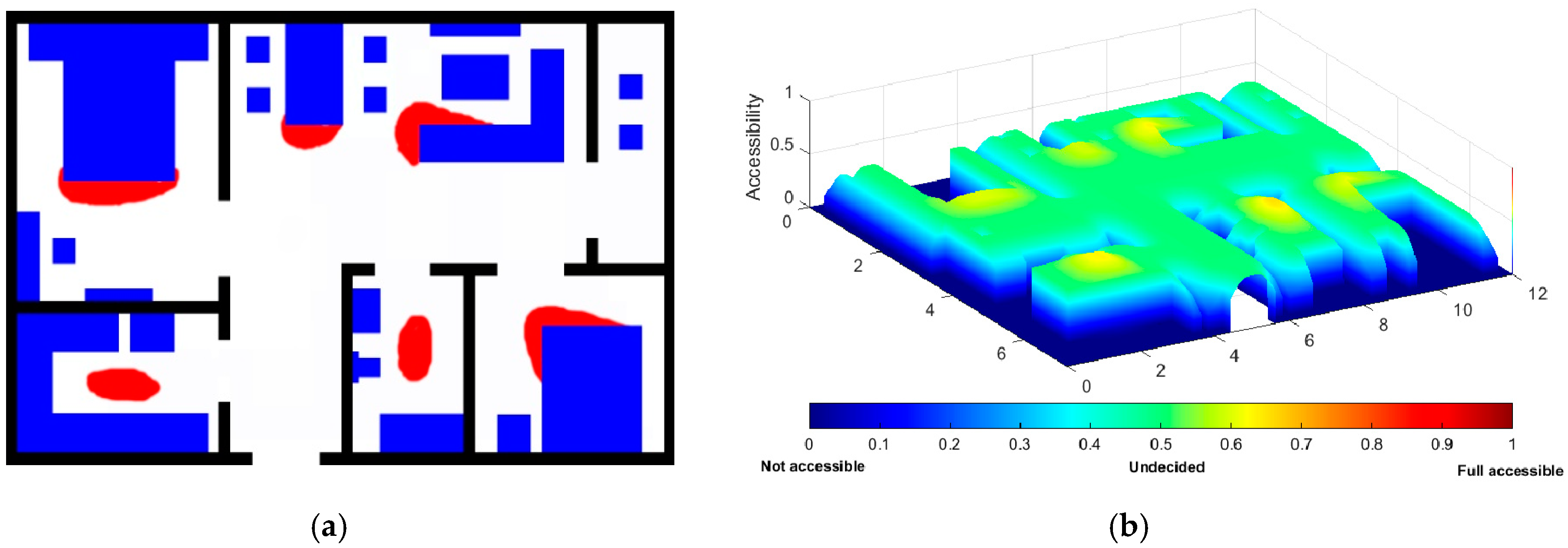
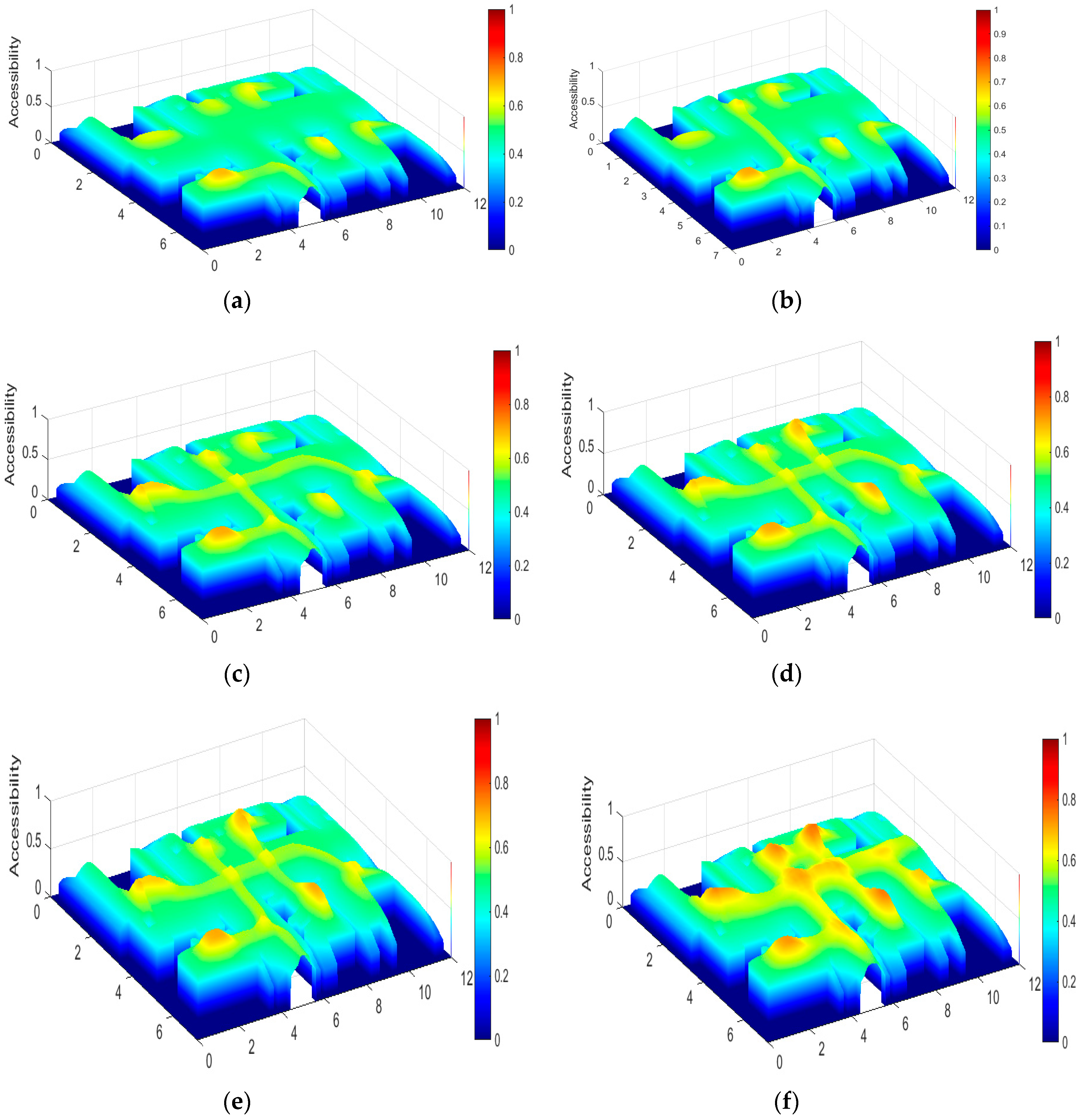
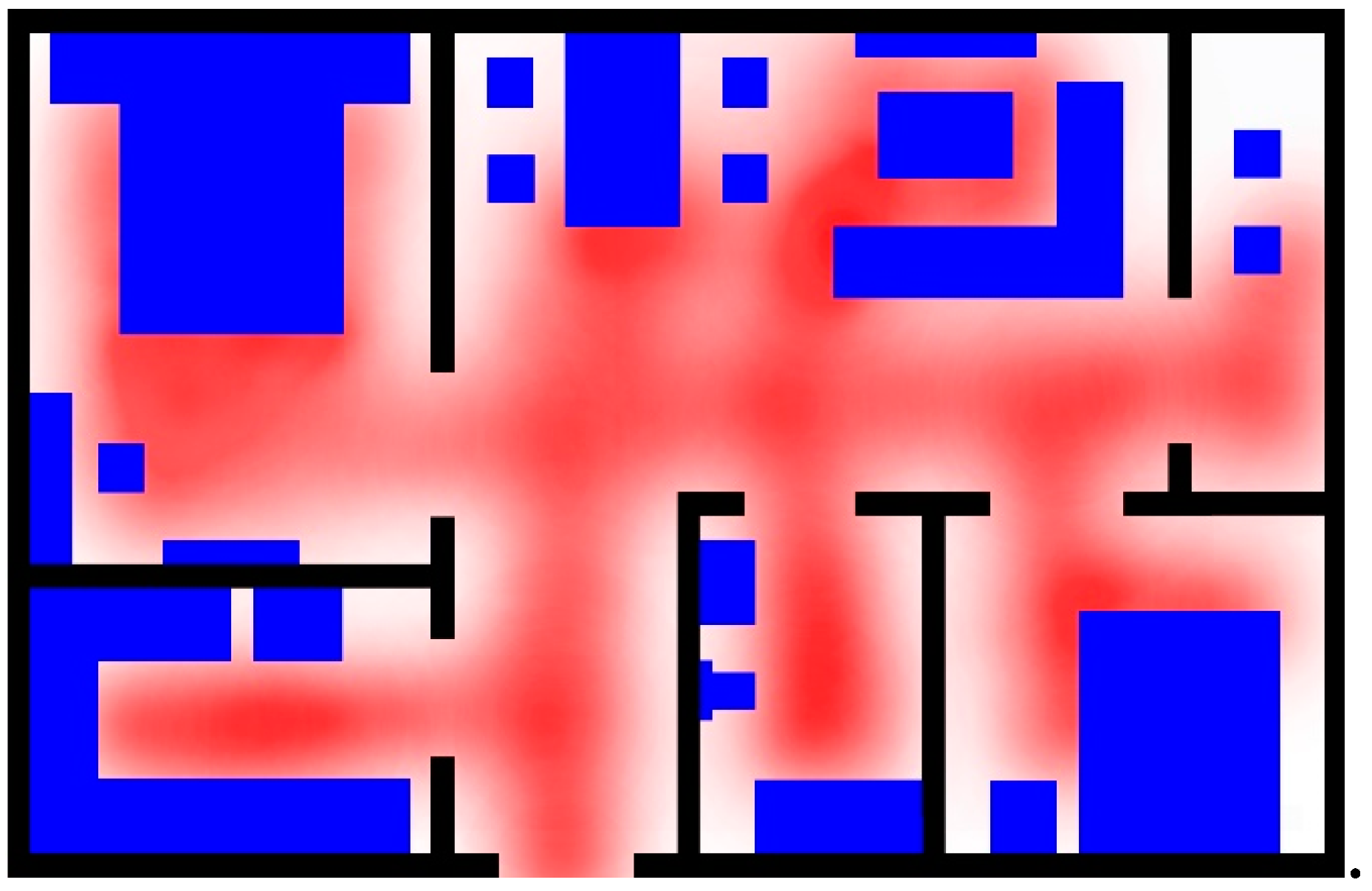
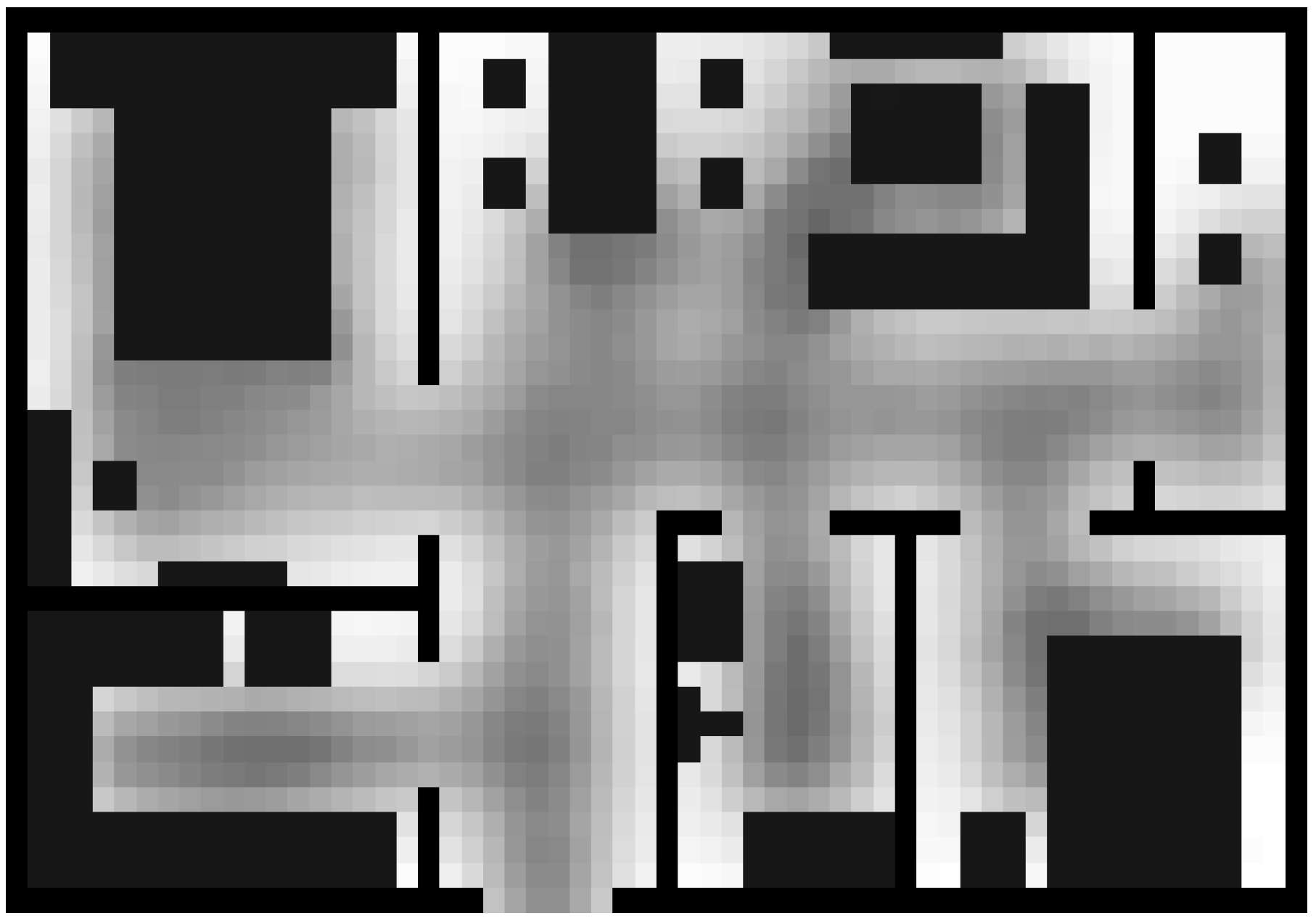





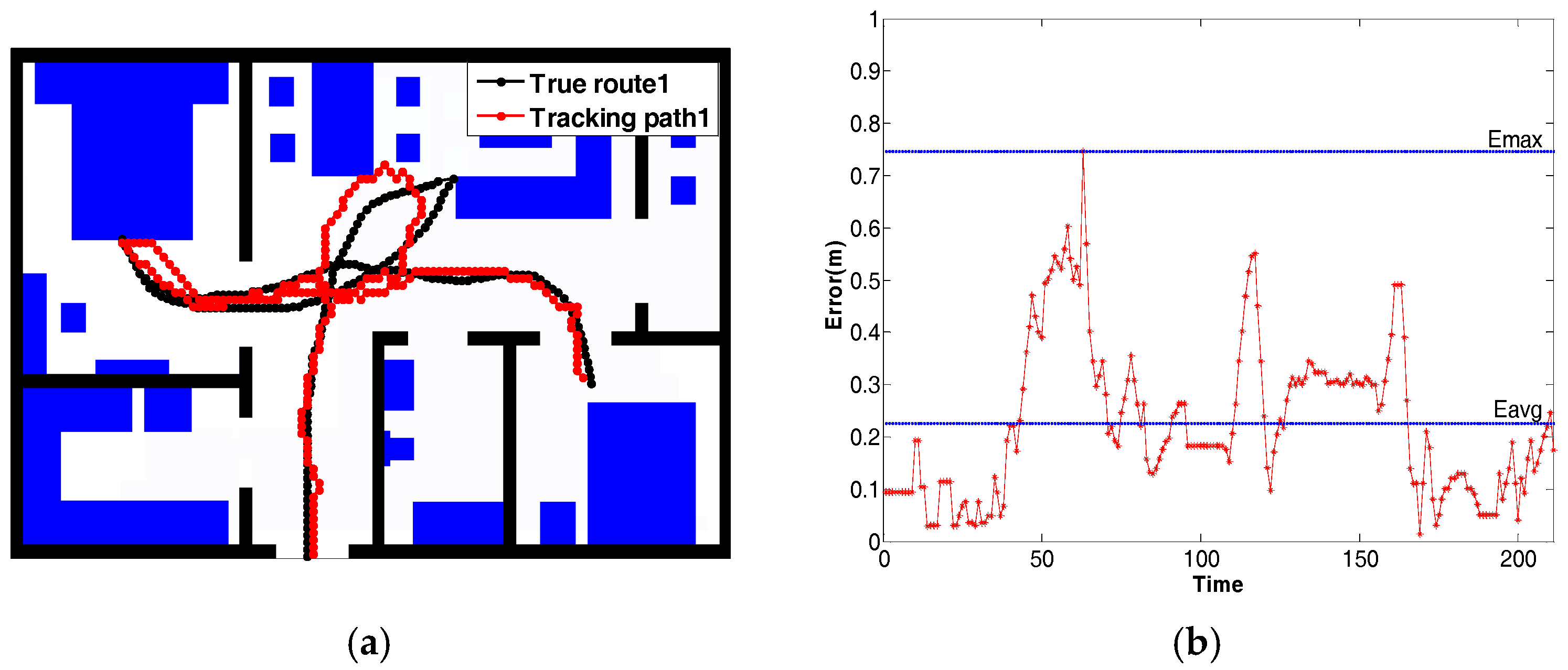
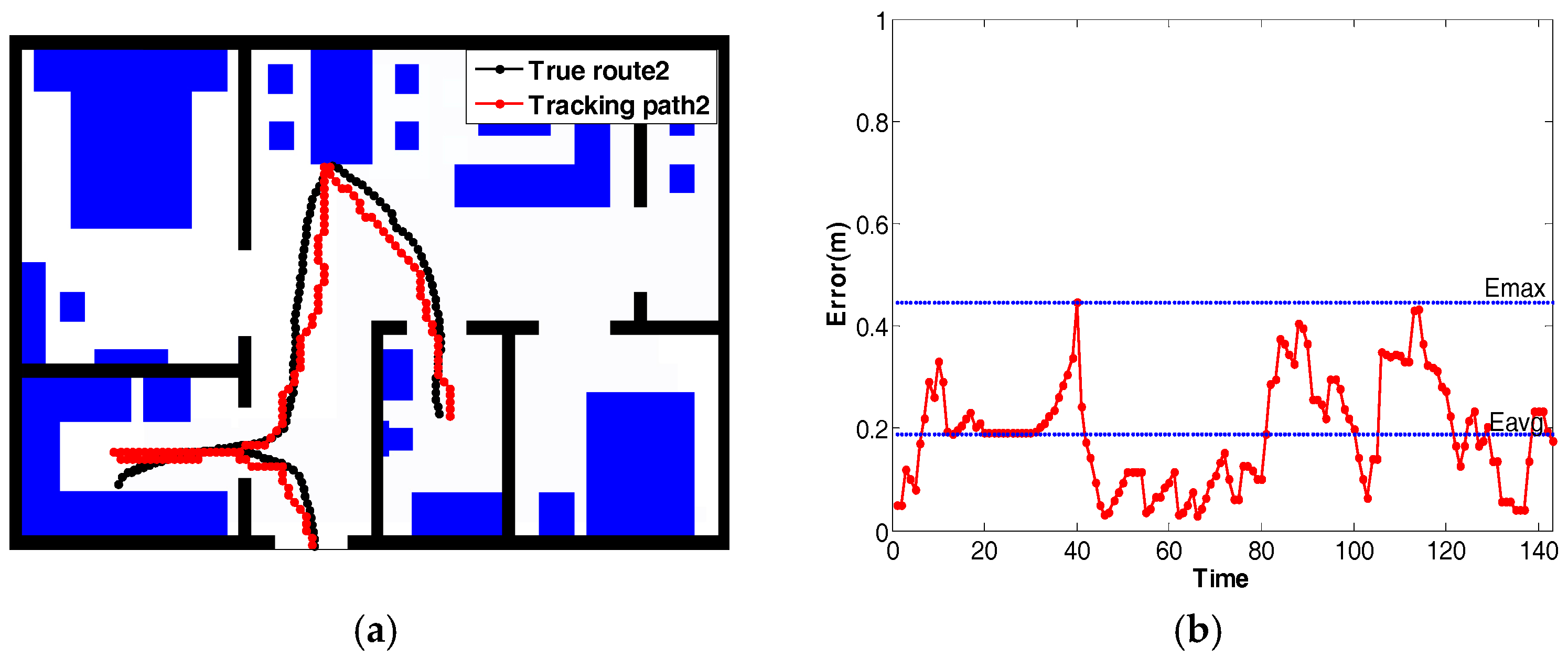
| Parameter | Value |
|---|---|
| No. of PIR sensors | 10 |
| Number of PIR sensing area | 14 |
| Maximum coverage ratio | 0.4182 |
| Actual coverage rate | 0.3903 |
| Overlap rate | 0.0714 |
© 2018 by the authors. Licensee MDPI, Basel, Switzerland. This article is an open access article distributed under the terms and conditions of the Creative Commons Attribution (CC BY) license (http://creativecommons.org/licenses/by/4.0/).
Share and Cite
Yang, D.; Xu, B.; Rao, K.; Sheng, W. Passive Infrared (PIR)-Based Indoor Position Tracking for Smart Homes Using Accessibility Maps and A-Star Algorithm. Sensors 2018, 18, 332. https://doi.org/10.3390/s18020332
Yang D, Xu B, Rao K, Sheng W. Passive Infrared (PIR)-Based Indoor Position Tracking for Smart Homes Using Accessibility Maps and A-Star Algorithm. Sensors. 2018; 18(2):332. https://doi.org/10.3390/s18020332
Chicago/Turabian StyleYang, Dan, Bin Xu, Kaiyou Rao, and Weihua Sheng. 2018. "Passive Infrared (PIR)-Based Indoor Position Tracking for Smart Homes Using Accessibility Maps and A-Star Algorithm" Sensors 18, no. 2: 332. https://doi.org/10.3390/s18020332




